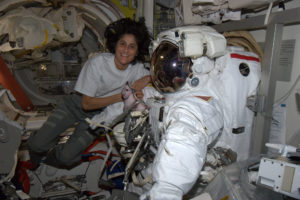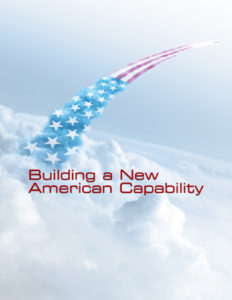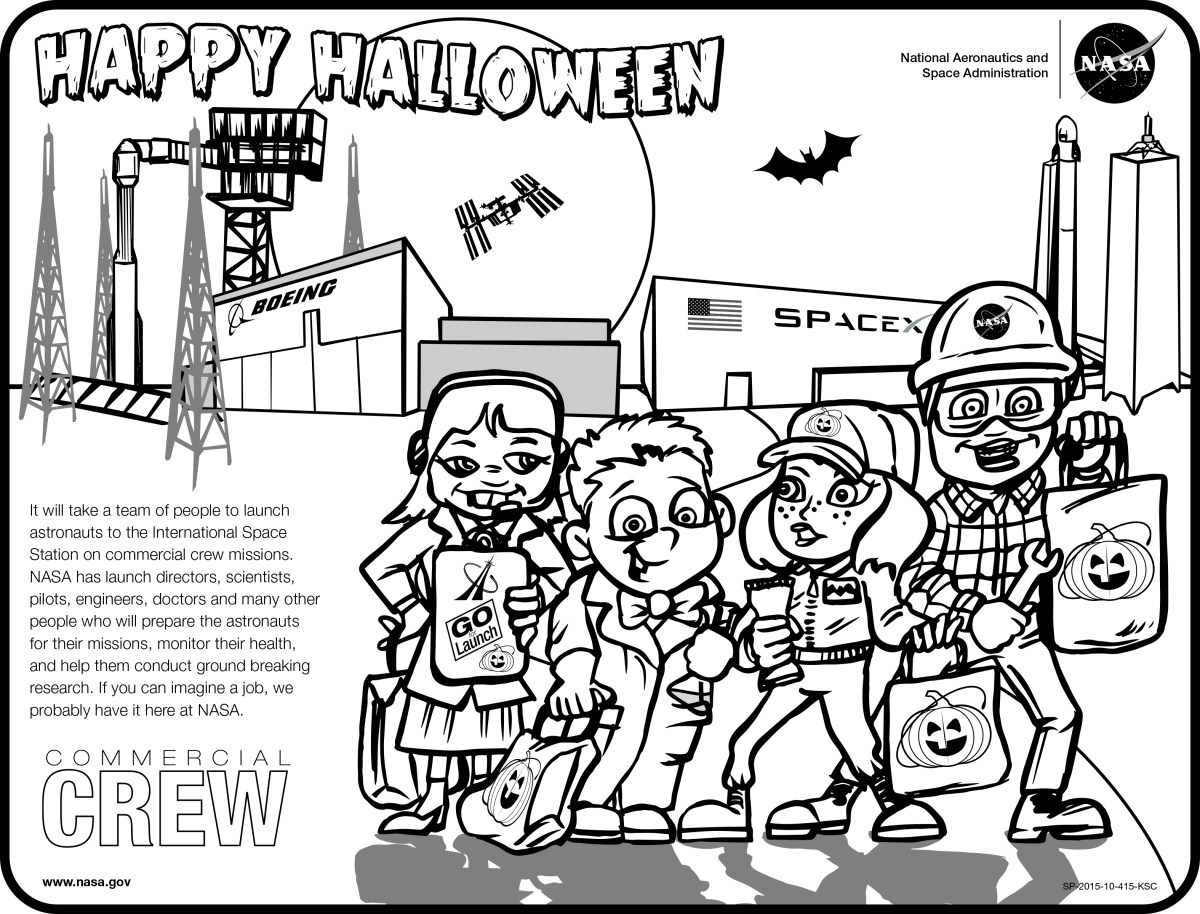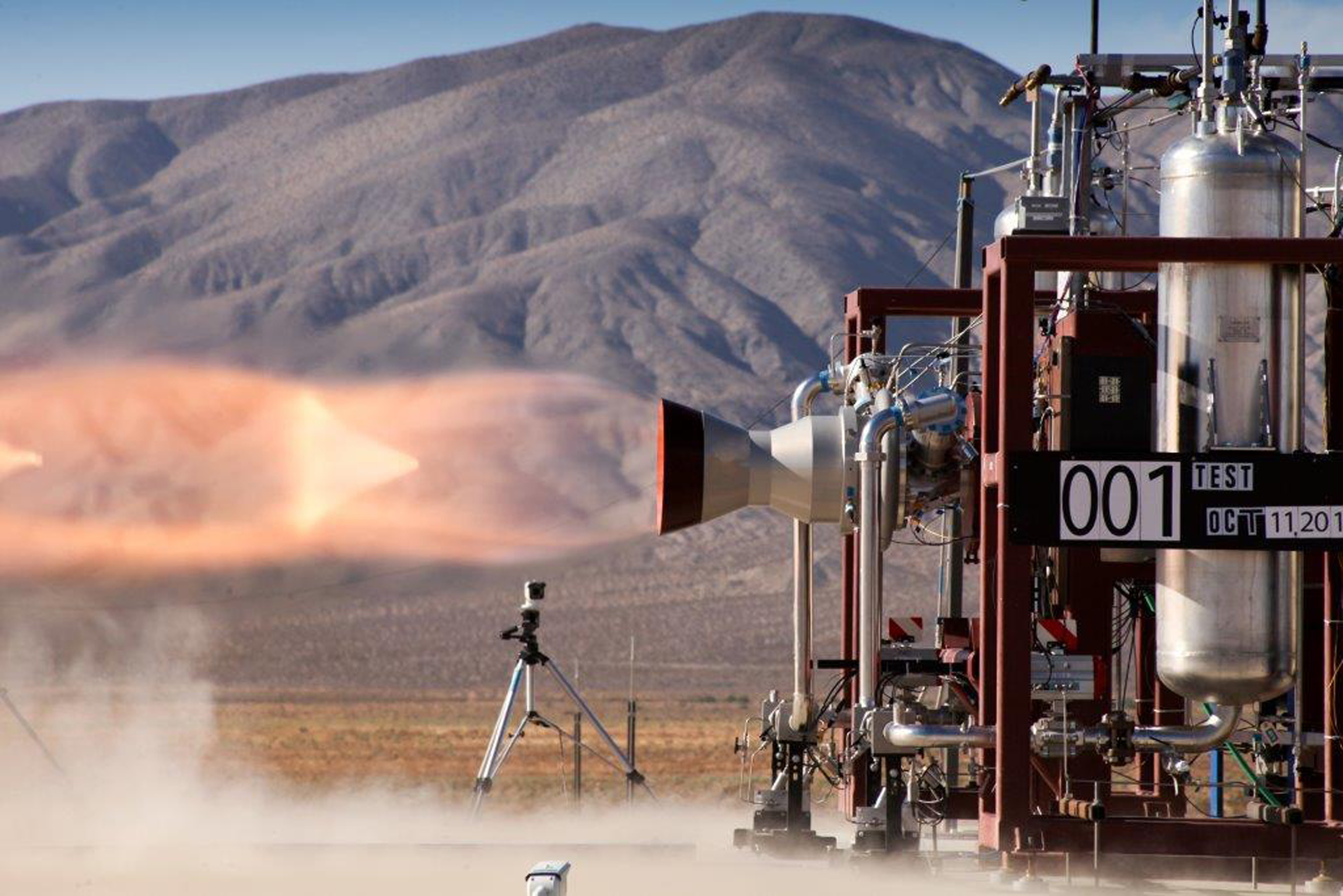 In case you missed it, President Barack Obama talked Thursday, Oct. 13, with the two companies developing the next generation of American spacecraft designed to take NASA astronauts into orbit and to the International Space Station.
In case you missed it, President Barack Obama talked Thursday, Oct. 13, with the two companies developing the next generation of American spacecraft designed to take NASA astronauts into orbit and to the International Space Station.
Touring exhibits by Boeing and SpaceX during the Frontiers Conference at Carnegie Mellon University and University of Pittsburgh in Pittsburgh, Obama discussed the immediate future of space exploration and touted the advances made in the public-private partnerships between the companies and NASA’s Commercial Crew Program. Because the new spacecraft will enable a larger space station crew and more research time in space, they are seen as critical avenues to help scientists and astronauts explore the best methods to send crews into deep space and eventually to Mars.
The goal is “to lead humanity farther out into the final frontier of space,” the president said. “Not just to visit, but to stay.”
Obama even took the controls of a simulator designed to mimic the flight of Boeing’s CST-100 Starliner spacecraft. He conducted a Starliner docking maneuver similar to the one astronauts will actually fly in the future during crew rotation missions to the orbiting laboratory.
“Your ride is here,” Obama said after completing the exercise.
“I’m not sure who had more fun today – the president or me,” said NASA astronaut Serena Aunon-Chancellor, who helped demonstrate how the simulator worked. “He was a natural docking the Starliner to the space station!”
The president also inspected SpaceX’s Crew Dragon design up-close and talked at length with Aunon-Chancellor and a company official.
“You almost want to get in and take off, don’t you?” the president said.
“While visiting Dragon, we discussed the future of human spaceflight and how important it is to safely and reliably get our crew to the station in low-Earth orbit so NASA can focus on human exploration in deep space,” Aunon-Chancellor said. “We’re excited about the progress our partners are making and look forward to flying with them soon.” Photo credit: Michael Henninger/ Pittsburgh Post-Gazette
 What would you take to space? Astronaut Suni Williams took a cutout of her dog, Gorbie, on her first mission to the International Space Station. Kids 4 to 12, draw what you would take and enter it in our Children’s Artwork Calendar contest! Your entry could be beamed to the space station! http://go.nasa.gov/2fvRLNf
What would you take to space? Astronaut Suni Williams took a cutout of her dog, Gorbie, on her first mission to the International Space Station. Kids 4 to 12, draw what you would take and enter it in our Children’s Artwork Calendar contest! Your entry could be beamed to the space station! http://go.nasa.gov/2fvRLNf

 Boeing will use solar energy to power the company’s CST-100 Starliner for crew missions to and from the International Space Station as part of NASA’s Commercial Crew Program. The sun’s energy offers a reliable and efficient power source for the Starliner just as it does for the space station and satellites.
Boeing will use solar energy to power the company’s CST-100 Starliner for crew missions to and from the International Space Station as part of NASA’s Commercial Crew Program. The sun’s energy offers a reliable and efficient power source for the Starliner just as it does for the space station and satellites. NASA’s Commercial Crew Program has been redefining space system development for low-Earth orbit by forming strong public-private partnerships with the aerospace industry to encourage innovation while maintaining NASA’s high safety standards and leveraging the agency’s 50-plus years of spaceflight experience.
NASA’s Commercial Crew Program has been redefining space system development for low-Earth orbit by forming strong public-private partnerships with the aerospace industry to encourage innovation while maintaining NASA’s high safety standards and leveraging the agency’s 50-plus years of spaceflight experience. There are no grocery stores in space, but there may soon be farms. Very small farms that are important to a crew conducting a mission to deep space. That’s because our astronauts will need to grow some of their own food. Researchers on Earth and astronauts on the International Space Station are already showing what is needed to grow robust plants in orbit.
There are no grocery stores in space, but there may soon be farms. Very small farms that are important to a crew conducting a mission to deep space. That’s because our astronauts will need to grow some of their own food. Researchers on Earth and astronauts on the International Space Station are already showing what is needed to grow robust plants in orbit.









